#african golden wolf
Text
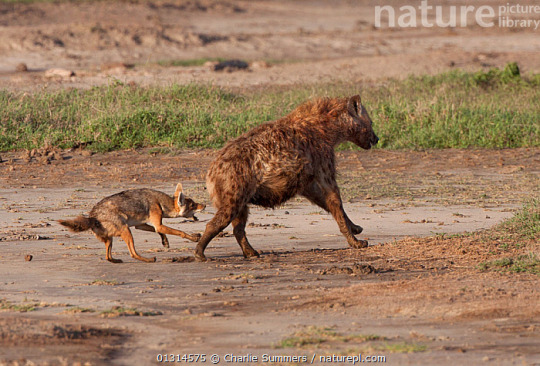
A female Serengeti wolf (Canis lupaster bea) chases a spotted hyena (Crocuta crocuta) away from her pups in a nearby den. Ngorongoro Conservation Area, Tanzania.
Photo © Charlie Summers / naturepl.com
352 notes
·
View notes
Text
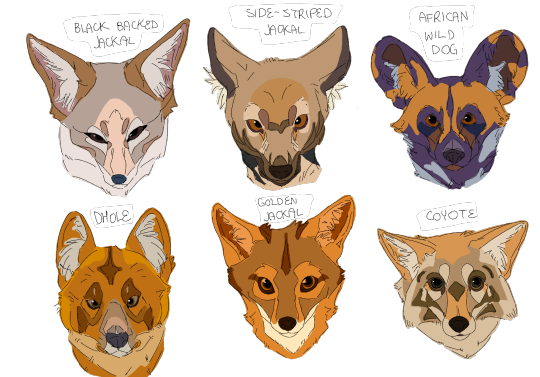
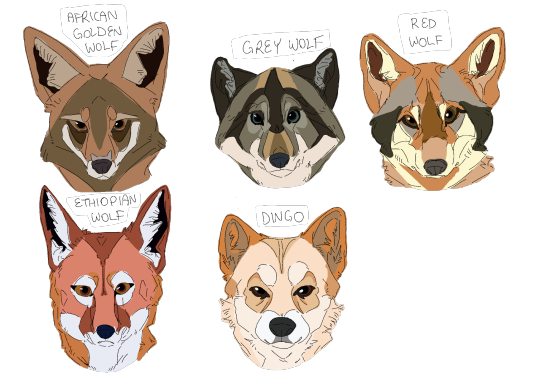
Finishing up the canines with “true dogs”— Canis, Cuon, Lycaon, and Lupulella!
#black backed jackal#side striped jackal#african wild dog#dhole#golden jackal#coyote#african golden wolf#grey wolf#red wolf#ethiopian wolf#dingo#dog#wolf#jackal#canine#vex art#headshot project
15 notes
·
View notes
Text
Canis anthus and Canis aureus
African golden wolves, Canis anthus, were believed to be an African subspecies of the Eurasian golden jackal, Canis aureus, until 2015 when genetic tests showed that they were more closely related to grey wolves. That makes them the first “new” canines to be discovered in 150 years.
Photos show golden jackals on the left and African golden wolves on the right
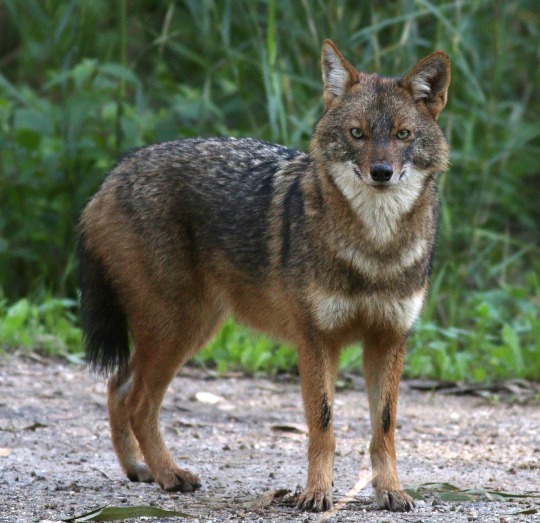
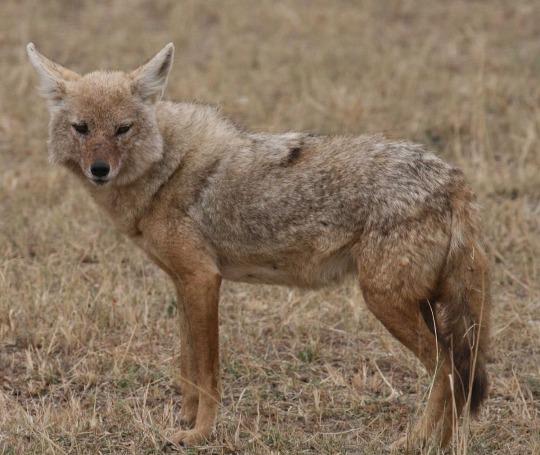
Golden jackals are widespread in Europe and Asia. They are most common in southern Eurasian countries ranging from Myanmar (Burma) to Greece, but they are spreading further into European countries. Within the past 20-30 years they have spread into Italy and Ukraine, and there was even a sighting of one in Norway last year.
African golden wolves, also known as African wolves or golden wolves, are found in all North African countries and some of West, Central, and East Africa. Generally found in grasslands, they also live in forests, savannas, and desert environments. Golden jackals are rarely found anywhere besides grasslands.

Golden jackal ^
Small animals including rodents, reptiles, birds, and insects make up roughly half of the golden jackal’s diet, the other half consisting of fruits and other vegetation. They are also known to follow tigers to scavenge off large animals they kill. Golden jackals are very social and do almost everything in pairs, including hunting and scavenge.
Golden jackals are good hunters due to an amazing sense of smell. Because of this, people bred them with huskies and spitz dog breeds to create the sulimov dog. Sulimov dogs have one of the strongest senses of smell of any dog breed and are used for this reason as sniffer dogs.
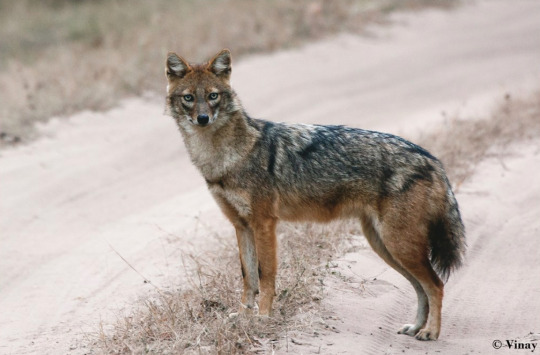
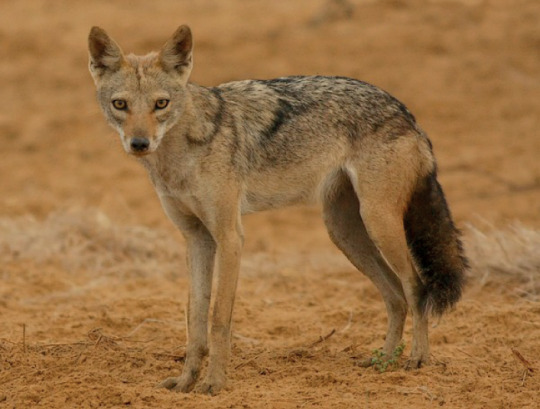
Wild boars make up most of the African wolf’s diet, but they also frequently hunt small animals like ground squirrels, hares, and insects like the golden jackal. Also like golden jackals, African wolves are pretty social. They rarely form large packs like grey wolves, who they are more closely related to than to golden jackals, but their adult offspring will often stay with the parents to help care for pups.
I rate the golden wolf and jackal 15/10. One hid as a jackal for many years and the other steals from tigers. Amazing

African wolf ^
Photo credits:
(1) Jan Ebr (2) Lee R. Berger (3) Carlo Galliani (4) Vinay Narayana Swamy (5) Cécile Bloch (6) Mourad-Harzallah
#jackal#wolf#golden jackal#golden wolf#african wolf#african golden wolf#wolves#jackals#animals#biology#nature#science#wildlife#zoology#animal#dog#dogs#wild
144 notes
·
View notes
Photo
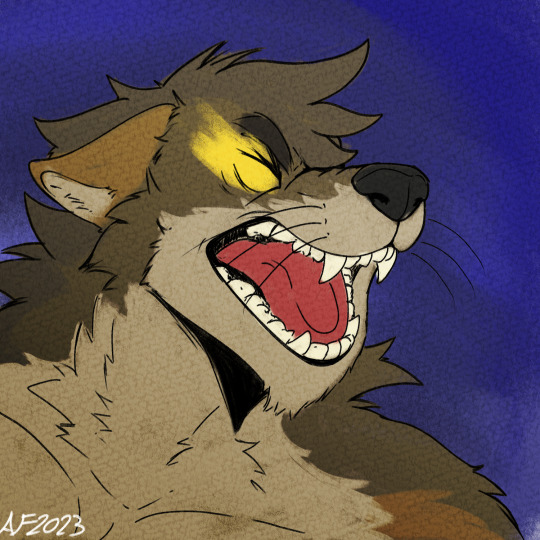
[OC] Amadi at night
What do you think he's saying here?
-------------------------------------
If you like this, please follow me here on Inkblot and also on these cool sites below!
[Tumblr](https://www.tumblr.com/blog/artsy-foxo)
[Bluesky](https://bsky.app/profile/artsyfoxo.bsky.social)
[Patreon](https://www.patreon.com/m/ArtsyFoxo)
[Autumn Hills (Webcomic) ](https://autumnhills.the-comic.org/)
Posted using PostyBirb
1 note
·
View note
Text

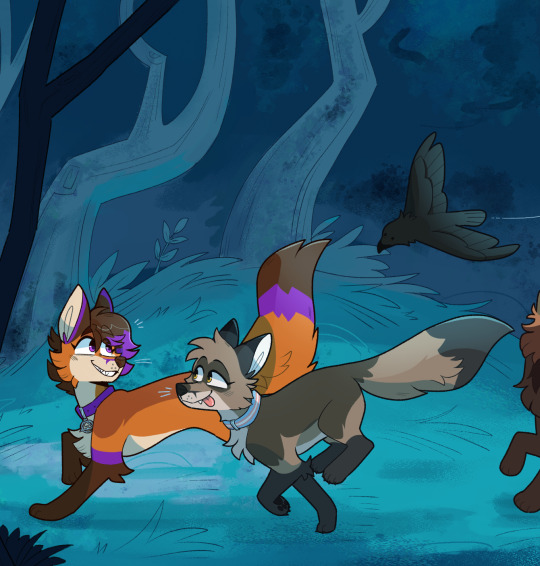
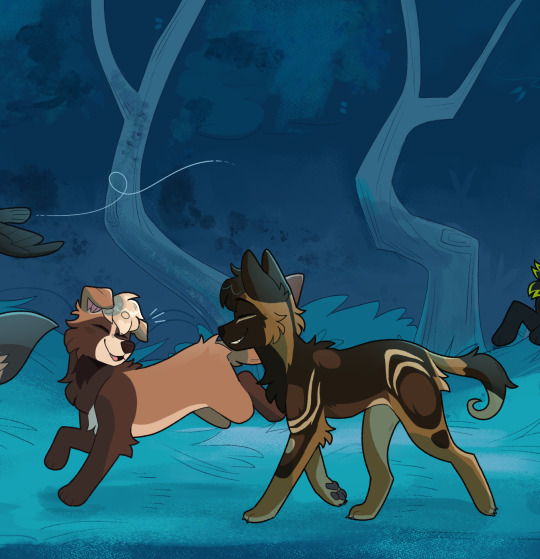
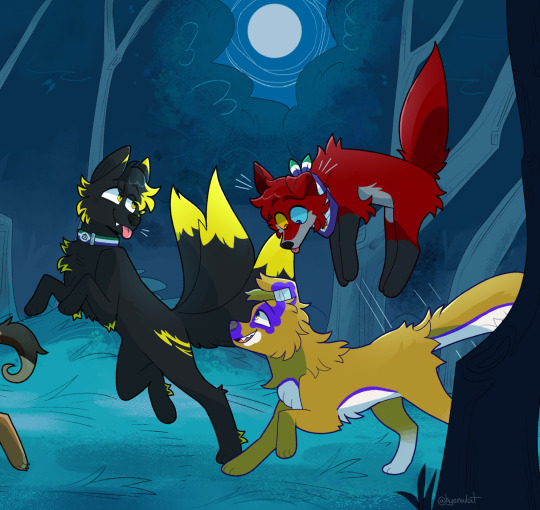
running with the wolves (and foxes. and dogs.)
(commission for @/CeolTheFox, @/fox_gassy, @/SammyTheTanuki, @/grishicat, @/socialhermtcrab, @/Wotokay_, and @/Reskao1 !)
#my art#commission#furry#sfw furry#furry art#safe fur work#fox#red fox#african wild dog#awd#border collie#golden retriever#wolf#wolfwalkers
30 notes
·
View notes
Text
I love these "inbetween guys" that essentially look like they're the halfway point between a wolf and a fox
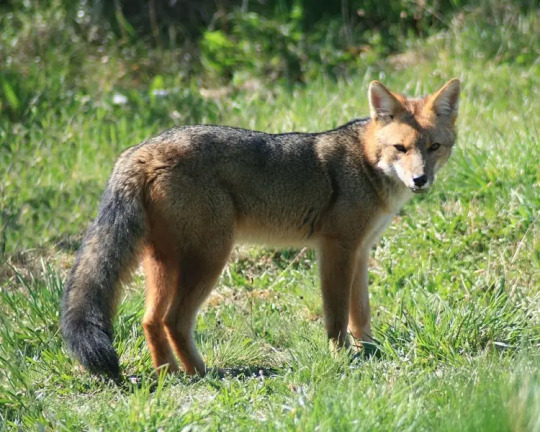
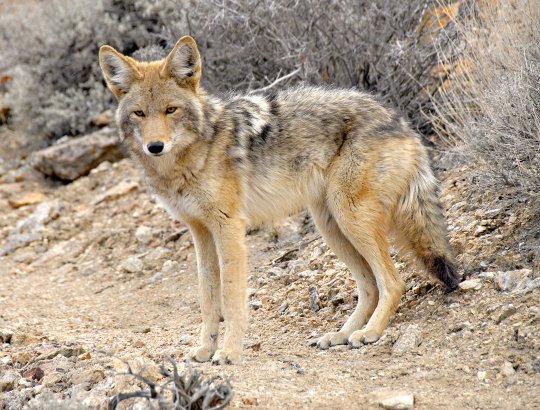


26 notes
·
View notes
Text
Winter brings with it the lupine urge to fling myself into a snowdrift and play. And then the realization that I don't have fur anymore hits and yeah. No rolling in snowdrifts. Spring is now bringing with it the lupine urge to just drop whatever shit I'm carrying, flop to the ground, and roll around in the grass. I swear to god, my wolf instincts consist of "I can eat that raw, right?" and "I'm upset, time to howl" and "roll in the snow/grass/sand/whatever" and nothing actually remotely useful.
#wolf therian#Canadian timber wolf therian#African golden wolf therian#therian#therianthropy#Welcome to my day to day life as a wolf.#It's a lot of resisting doing this kind of shit.
10 notes
·
View notes
Text
Species: Wolves (Canis)
This series focuses on helping people choose interesting species for their fursona through informing them of the many, often overlooked, species out there! This post is about wolves.
──── ◉ ────
Species:
Red Wolf (Canis rufus)

Size: 66cm (26in) height (at shoulder), 121cm (4ft) lenght, 20-36kg (45-80lbs)
Diet: carnivorous, preys on deer, small mammals
Habitat: coastal prairies, marshes, forests
Range:

Status: critically endangered/endangered
──── ◉ ────
Eastern Wolf/Timber Wolf (Canis lycaon)
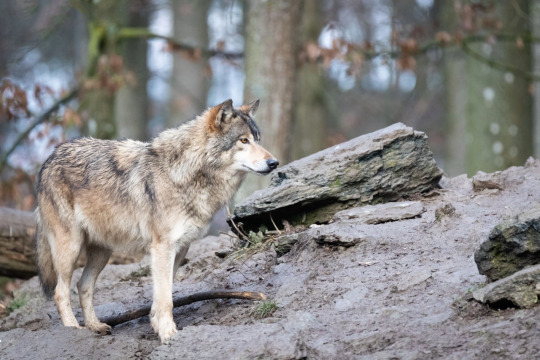
Size: 63-91cm (25-36in) height (at shoulder), 160cm (5.5ft) lenght, 23-30kg (53-67lbs) weight
Diet: carnivorous, preys on deer, large herbivores
Habitat: deciduous forests, coniferous forests, mixed forests
Range (in blue):

Status: imperiled/threatened
──── ◉ ────
Coyote (Canis latrans)
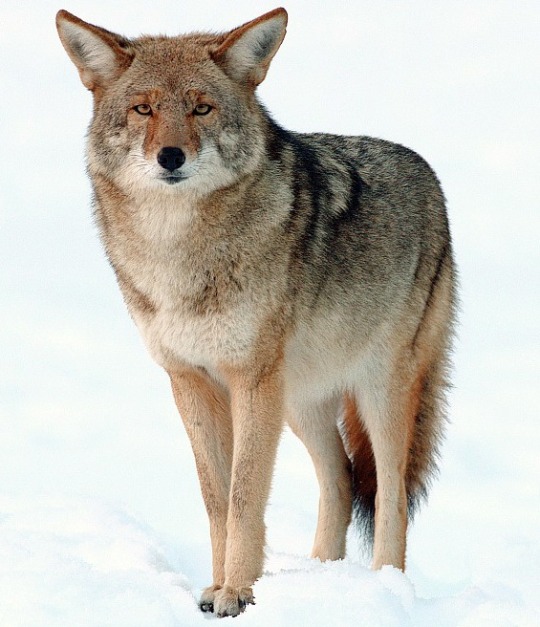
Size: 58-66cm (21-25in) height (at shoulder), 76-86cm (2.4-2.8ft) lenght, 6.8-21kg (14-46lbs) weight
Diet: omnivorous, preys and scavenges small mammals, deer, livestock, insects, carrion, berries
Habitat: varied, sagebrush-steppe, forests, prairies, deserts, savannahs, alpine meadows, temperate ranforests, urban
Range:

Please note, the coyote has 19 subspecies!
They all have small but interesting variation, and can vary in size quite dramatically. If you'd like a coyote fursona, I recommend checking them out! The picture above is of a mountain coyote (Canis latrans lestes)
Status: least concern
──── ◉ ────
Grey Wolf (Canis lupus)

Size: 80-85cm (31-33in) height (at shoulder), 100-160cm (3.2-5.2ft) length, 23-80kg (50-176lbs) weight
Diet: carnivorous, preys on large ungulates, small mammals
Habitat: varied, temperate forests, mountains, tundra, taiga, grasslands, deserts
Range:

Please note, the grey wolf has 38 subspecies (the above pictured being eurasian wolf, Canis lupus lupus)!
Of which I would like to highlight:
Arabian Wolf (Canis lupus arabs)

Arctic Wolf (Canis lupus arctos)
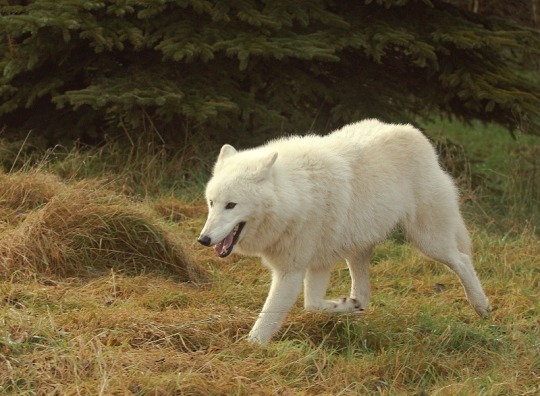
Mexican Wolf (Canis lupus baileyi)

Also, please note the grey wolf comes in a variety of colors, regardless of subspecies
Status: least concern
──── ◉ ────
Dingo (Canis dingo)

Size: 52-60cm (20-23in) height (at shoulder), 120-150cm (3.9-4.9ft) lenght, 10-15kg (22-33 lbs) weight
Diet: carnivorous, preys on small mammals, livestock
Habitat: varied, spanning all if Australia
Range:

Please note, the dingo's taxonomic classification is debated - you may find it also listed as Canis familiaris, Canis familiaris dingo, or Canis lupus dingo
Status: threatened
──── ◉ ────
African Wolf/Golden Wolf (Canis lupaster)

Size: 40cm (15in) height, 7-15kg (14-33lbs) weight
Diet: Carnivorous, preys on small mammals, small reptiles, ground-nesting birds, insects
Habitat: mediterranean, scrublands, forests, savannahs
Range:
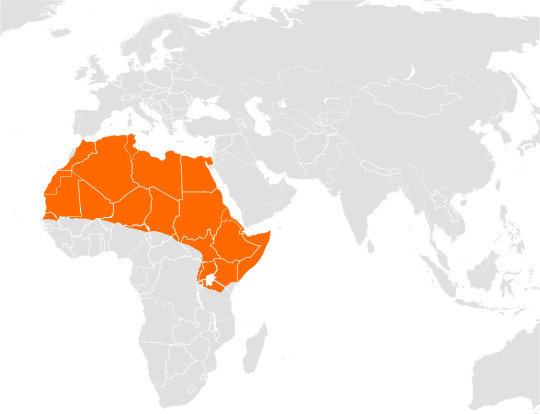
Please note! The african wolf has 6 subspecies!
Status: least concern
──── ◉ ────
Ethiopian Wolf (Canis simensis)
The Ethiopian wolf has 2 subspecies:
Northern Ethiopian Wolf (Canis simensis simensis)

Southern Ethiopian Wolf (Canis simensis citernii)

Size: 53-61cm (20-24in) height (at shoulder), 100cm (3.2ft) lenght, 11-20kg (24-44lbs) weight
Diet: carnivorous, preys on small mammals
Habitat: afroalpine grasslands, heathlands
Range:

Status: threatened
──── ◉ ────
Golden Jackal (Canis aureus)

Size: 46-51cm (18-20in) height (at shoulder), 69-84cm (27-33in) lenght, 8-11kg (18-24lbs) weight
Diet: omnivorous, preys and scavenges small mammals, small reptiles, ground birds, fish, insects, fruit
Habitat: open savannahs, deserts, arid grasslands
Range:

Please note! The golden jackal has 7 subspecies!
Status: least concern
──── ◉ ────
#fursona resources#species#furry#fursona#mammals#canidae#canids#canis#wolf#wolves#red wolf#timber wolf#coyote#grey wolf#dingo#african wolf#ethiopian wolf#golden jackal
6 notes
·
View notes
Text
So, I just woke up, my brain went onto brainrot mode and I thought "Why not do collages of outfits Morowa would wear out of work?", since, ya know, as an artist... I need ref. Lol
Anyways, went there and... I did it.

Was not expecting her clothes to Slay this hard tho, but I love it!! 🥹🥹😭😭🧡🤎
(Also I find this incredibly amusing when I remember her hanging around Aiden with one of those looks... Like, the most basic-looking dude with a gal that looks like she's going for a maganize photoshoot.
Same energy with Jordi standing besides him, tho even Jordi's suit is more simple/ minimalistic... He's still better dressed than Aiden tho. (saying this affectionally) ).
Anyways, Morowa fashion for y'all 🫶🏽🧡🤎✨
Will draw her wearing one of those looks soon 🗣️💅🏽✨
#watch dogs#watch dogs oc#OC Info#OC Fashion#OC Fashion Style#aiza rambles#Morowa Bancroft#Hitwoman#Needs to be more organized#But the OC info dump is slowly coming together#Her style is a mix of Casual and Glam btw#Like she may be in the run from the Mafia but is going to serve fr#Slaying in both senses of the word#She's actually a fashion enthusiast#and roasts half of people's outfit choices#Specially Aiden's#My dude wears different variations of the same outfit ofc she's gonna talk about it#“I have seen garage sales selling better clothes” (affectionally)#Golden African Wolf color palette all the way 🐺🤎🧡#And sometomes Rottweiler color palette too 🐶🖤🤎#Funny that her color palette also gives off Autumn Core#Anyways gonna shut up now#Watch Dogs: Underworld#Assassin's Creed: Underworld#fanfic#fanfiction#fanfic crossover#finally made a tag for my story yay!#Aiza_Luna_OCs#Hound girl 🐶
1 note
·
View note
Text
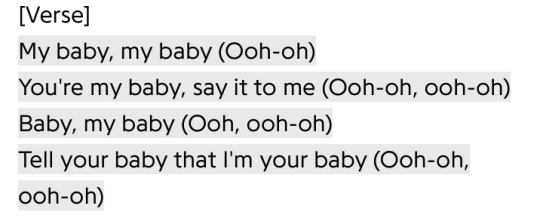


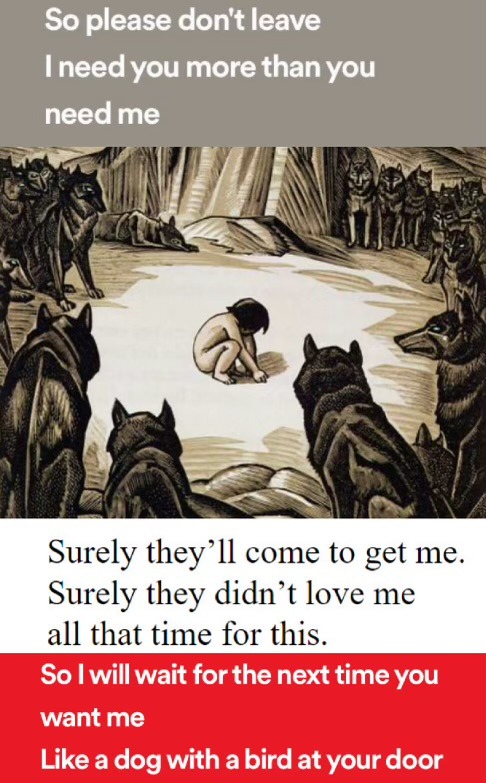







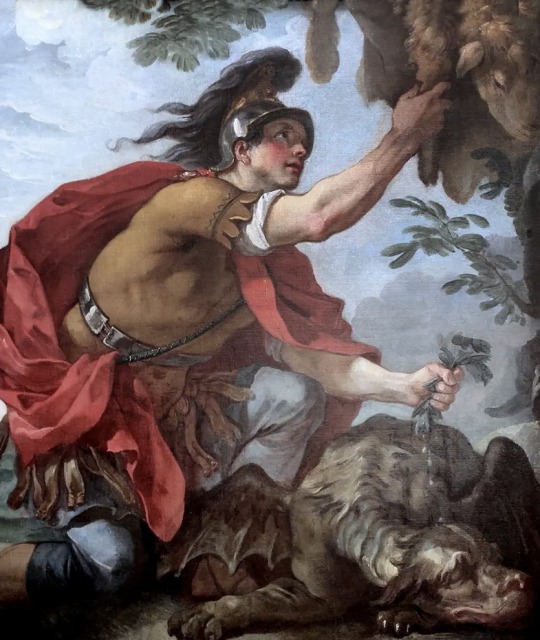





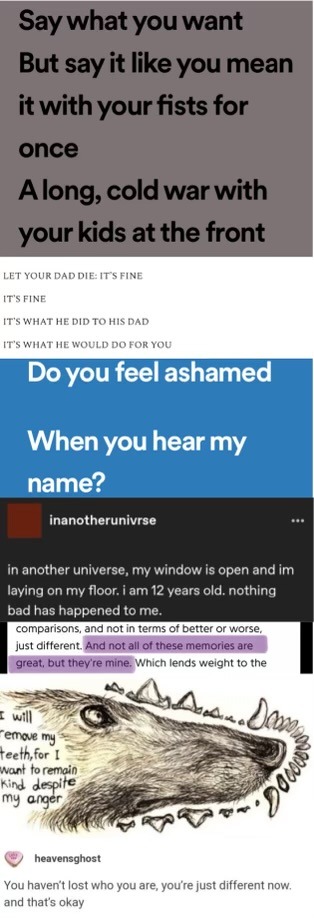



You’ll never recover from that kind of devotion.
Jason Grace: on family and the lack thereof, wolves that really are dogs, remembering and healing and the sudden inevitability of being remembered.
I Bet on Losing Dogs, Mitski / War of the Foxes, Richard Siken / You’re on Your Own, Kid, Taylor Swift / Trees II, McCafferty / Mowgli Taken in by the Wolves, 1937 / Space Dog, Alan Shapiro / Moon Song, Phoebe Bridgers / A Hymn to Childhood, Li-Young Lee / Susan Smith, wych elm / The Blood of Olympus, Rick Riordan / Saint Bernard, Lincoln / Lupa Capitolina in Ludus, Romania / The Odyssey, Homer (trans. by Emily Wilson) / quadruple dog art by @mxmorggo on Instagram / Norwegian Wood, Haruki Murakami / The Lost Hero, Rick Riordan / House of Leaves, Mark Z. Danielewski / Vulnerability, @/kazerad / Euripides, Elektra / Jason seizing the Golden Fleece, Charles Natoire / Thalia (Grace) / I can’t find the source… / My Sister’s Keeper, Jodi Picoult / Seam, Tarfia Faizullah / In the Blood, John Mayer / The Vintage Book of African American Poetry, Michael S. Harper, Anthony Walton / Memento Mori, Crywank / And My Father’s Love Was Nothing Next To God’s Will, Amatullah Bourdon / Family Line, Conan Gray / Franz Kafka’s letters to his father / Kronos/Saturn, Peter Paul Rubens / Wolf and pup / American Teenager, Ethel Cain / LET YOUR FATHER DIE ENERGY DRINK, Daniel Lavery and Cecilia Corrigan / Scott Street, Phoebe Bridgers / Tumblr, @/inanotherunivrse / Tomatoes, Shane Koyczan / Pinterest / Tumblr, @/heavensghost / Tumblr, @/tagdevilish / through sickness and in health… by Angelina Hajducky on Instagram / Jason (given name), Wikipedia / Human Acts, Han Kang / The gas pillar in the Carina Nebula, NASA / Tumblr, @/roach-works / Not Strong Enough, boygenius / Grit, silas denver melvin / Herakles, Euripides (trans. by Anne Carson) / Pelias sending forth Jason, 1880 / The Audre Lorde Questionnaire to Oneself, Brianna Albers / The Mark of Athena, Rick Riordan / Wolf in White Van, John Darnielle / The Oresteia, Aeschylus / Tumblr, @/orpheuslament / Anecdote of the Pig, Tory Adkisson / The Burning Maze, Rick Riordan / I Bet on Losing Dogs, Mitski / Icarus, The Crane Wives / The Three Graces, Edouard Bisson / For Your Own Good, Leah Horlick
#Can’t blame tumblr for ruining the quality when I upload like 50 pictures 😭#Jason and Laika. A metaphor to think about. Also the picture of the galaxy is part of the Argo Constellation btw it’s not random#jason grace#lester papadopoulos#trials of apollo#heroes of olympus#thalia grace#percy jackon and the olympians#pjo hoo toa#web weave#web weaving#this is like Christmas for coda a little bit lol#this took me so long#and I’ll never be over Thalia’s name btw. Ever
259 notes
·
View notes
Text

Serengeti wolf (Canis lupaster bea)
Ngorongoro Conservation Area, Tanzania
Photo © Seig & Alice Kopinitz
#wolf#wolves#african wolf#african golden wolf#serengeti wolf#photography#ngorongoro conservation area
248 notes
·
View notes
Note
So since dogs, wolves, and coyotes can interbreed and have viable offspring are there any other canids that can? Not saying we should let them or anything. Completely against wild and domestic animals interbreeding. It's just so interesting that these three species can when most hybrids are infertile.
So theoretically, most species in the Canis genus could interbreed. Gray wolves, red wolves, eastern wolves, and dogs have all hybridized at some point with coyotes. Dingoes and golden jackals have hybridized with dogs so they could theoretically make viable offspring with coyotes and wolves. African golden wolves and Ethiopian wolves are in the same genus, so they could also potentially cross with the others (though I don't believe I've seen any confirmed examples of either).
Here's some examples of various hybrids:
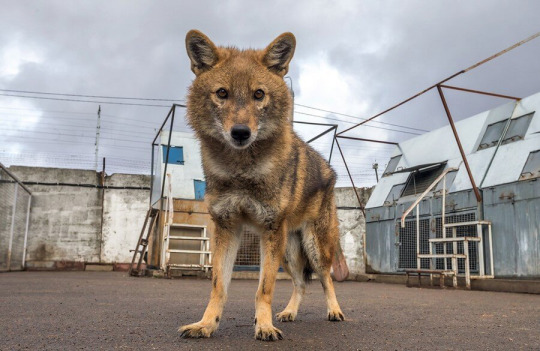
Sulimolv dog - A golden jackal x domestic dog. The initial pair were Lapponian Herders crossed with golden jackals.

Dingo-dog. Because of ongoing interbreeding of dingoes and domestic dogs, there is a wide range of colors and body shapes today among the Australian wild dog populations.

Golden jackal x feral dog in India.
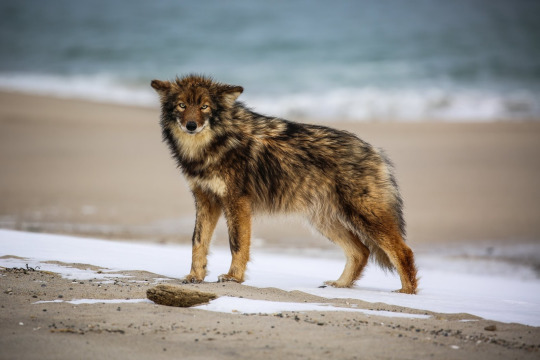
Coyote x long-haired dog breed.

Eastern coyote (Canis latrans "var.") - Predominantly coyotes but have traces of gray wolf, eastern wolf, and domestic dog.
3K notes
·
View notes
Text
Books to read in autumn
Historical novels
Wolf Hall by Hilary Mantel: England in the 1520s
The Pillars of the Earth by Ken Follett: Building the most splendid Gothic cathedral the world has ever known
Outlander by Diana Gabaldon: A back-in-time Scottish romance
Company of Liars by Karen Maitland: A novel of the plague in the year 1348
The underground railroad by Colson Whitehead: Enslavement of African Americans through escape and flight
The God of small things by Arundhati Roy: A family drama in the 60s located in India
The Diary of a Young Girl by Anne Frank: A powerful reminder of the horrors of world war II
Fantasy
A Game of thrones by George R. R. Martin: A Fantasy epic run by politics, strong families, dragons
Red rising by Pierce Brown: A dystopian science fiction novel set in a future colony on Mars
Babel by R.F. Kuang: Student revolutions, colonial resistance, and the use of language and translation as the dominating tool of the British empire
Legends & Lattes by Travis Baldree: A fresh take on fantasy staring an orc and a mercenary
Jade City by Fonda Lee: A gripping Godfather-esque saga of intergenerational blood feuds, vicious politics, magic, and kungfu
Spinning Silver by Naomi Novik: A tale of hope and magic, with brave maidens and scary monsters
The Atlas six by Olivie Blake: A dark academic sensation following six magicians
Mysteries & Horror
The Gathering Dark: An Anthology of Folk Horror by various authors: Short stories perfect for the Halloween mood
Sorrowland by Rivers Solomon: The story of Vern, a pregnant teenager who escapes the cult Cainland
The Weird and the Eerie by Mark Fisher: A noted cultural critic unearths the weird, the eerie, and the horrific in 20th-century culture through a wide range of literature, film, and music
Holly by Stephen King: Disappearances in a midwestern town
Vampires of El Norte by Isabel Cañas: Supernatural western
The good house by Tananarive Due: A classic New England tale that lays bare the secrets of one little town
Nonfiction
Ghostland: An American History in Haunted Places by Colin Dickey: The trail of America's ghosts
What moves the dead by T. Kingfisher: A gripping and atmospheric retelling of Edgar Allan Poe's classic "The Fall of the House of Usher
South to America: A Journey Below the Mason Dixon to Understand the Soul of a Nation by Imani Perry: A journey through the history, rituals, and landscapes of the American South—and a revelatory argument for why you must understand the South in order to understand America
All the living and the dead by Hayley Campbell: An exploration of the death industry and the people―morticians, detectives, crime scene cleaners, embalmers, executioners―who work in it and what led them there
Gödel, Escher, Bach: An Eternal Golden Braid by Douglas R. Hofstadter: Gödel, Escher, Bach is a wonderful exploration of fascinating ideas at the heart of cognitive science: meaning, reduction, recursion, and much more
#autumn mood#writing#inspiration#history#autumn#fall season#autumn leaves#autumn aesthetic#dark fantasy#dark academia#books and reading#books#books & libraries#bookstagram#currently reading#booklr#reading#book recommendations#writingcommunity#creative writing#writeblr#fall vibes#october#autumn vibes#historical novel#fantasy#fairy tale#fantasy reader#nonfiction#mystery
94 notes
·
View notes
Text
okay guys you’ve forced my hand
losers club fursonas
richie - brown bear. duh. or a hyena :)
eddie - stoat! little guys with too much energy. have y’all seen that video of the stoat on the trampoline? that’s eddie
bev - i’m picturing glamrock chica from fnaf but that doesn’t count so. sabertooth tiger. i think she deserves it
bill - grey wolf. pack leader <3 or a golden retriever
mike - clouded leopard. that’s the one that’s very paws right? idk it’s just vibes
ooh or a stag. i think i like that better
ben - otter or beaver :)
stan - possum. get it. ‘cause they p. ‘cause they play dead
or an african grey parrot
#furries pls confirm or deny#the losers club#richie tozier#eddie kaspbrak#stan uris#stanley uris#beverly marsh#bev marsh#mike hanlon#bill denbrough#ben hanscom#furry#furry hcs
29 notes
·
View notes
Text
I would like to offer this resource for therians, an extensive list of all of Sir David Attenborough’s nature documentaries that are available on soap2day, and a full list of what species* they each (notably, prominently) feature the natural behaviors of, separated by episode, and omitting species that were only shown dead, juvenile or being predated on. This took me a while (I have been working on it since Prehistoric Planet’s release) because I did in fact have to watch every single series in full in order to list all the species and the episodes are around 50 minutes long, but enjoy.
Long post ahead:
Most of these shows have closed captioning, which is why I’ve picked soap2day. Planet Earth is the only one that doesn’t. I did not include Dynasties and Dynasties II because each episode only features one species.
Thank you to Birch (@ambiguousmutt) for his help (he watched about half of the episodes) so I didn’t have to do it individually. Credit goes to him as well.
*Sometimes Attenborough doesn’t say the specific species and I was too busy trying to get through the episodes to identify it. In those cases I just put the most specific name I could.
Planet Earth
Episode one (From Pole to Pole): emperor penguin, polar bear, caribou, arctic grey wolf, Amur leopard, six-plumed bird-of-paradise, superb bird-of-paradise, great white shark, African elephant, African buffalo, lechwe, baboon, African wild dog
Episode two (Mountains): gelada, walia ibex, Ethiopian wolf, guanaco, cougar, grizzly bear, markhor, snow leopard, golden eagle, grey wolf, panda, golden snub-nosed monkey, red panda, demoiselle crane
Episode three (Fresh Water): giant salamander, grizzly bear, smooth-coated otter, Nile crocodile, dolphin fish, midge, Amazon river dolphin, dorado, piranha, spectacled caiman, crab-eating macaque, snow goose
Episode four (Caves): wrinkle-lipped free-tailed bat, cockroach, bat hawk, cave swiftlet, yellow-red rat snake, Texas blind salamander
Episode five (Deserts): Bactrian camel, dromedary camel, red kangaroo, fennec fox, guanaco, long-nosed bat, Nubian ibex, flat lizard, lion, African elephant, locust
Episode six (Ice Worlds): snow petrel, Antarctic petrel, south polar skua, humpback whale, emperor penguin, eider, muskox, arctic grey wolf, polar bear, little auk, arctic fox
Episode seven (Great Plains): Mongolian gazelle, red-billed quelea, wildebeest, snow goose, arctic fox, arctic grey wolf, bison, wild ass, Tibetan fox, pygmy hog, African elephant, lion, baboon
Episode eight (Jungles): magnificent bird-of-paradise, spider monkey, howler monkey, siamang gibbon, gliding tree frog, colugo, red crab spider, African elephant, chimpanzee
Episode nine (The Shallow Seas): humpback whale, multiple corals, banded sea krait, trevally, dugong, bottlenose dolphin, Socotra cormorant, salp, comb jelly, sea lion, dusky dolphin, sea urchin, sunflower starfish, short-tailed stingray, great white shark, king penguin, fur seal
Episode ten (Seasonal Forests): Eurasian lynx, moose, crossbill, wolverine, western capercaillie, pine marten, great grey owl, pudu, kodkod, mandarin duck, cicada, red deer, Amur leopard, tiger, mouse lemur
Episode eleven (Ocean Deep): whale shark, oceanic whitetip shark, common dolphin, Cory's shearwater, manta ray, sea spider, vampire squid, spider crab, unnamed deep sea eel, giant isopod, chambered nautilus, Pacific spotted dolphin, mola mola, frigatebird, sailfish, blue whale
Planet Earth II
Episode one (Islands): pygmy three-toed sloth, Komodo dragon, sifaka, marine iguana, Galapagos racer, Buller's albatross, fairy tern, Christmas Island red crab, yellow crazy ant, chinstrap penguin
Episode two (Mountains): Nubian ibex, red fox, golden eagle, grizzly bear, bobcat, flamingo, mountain viscacha rat, snow leopard
Episode three (Jungles): spider monkey, flying lizard, sword-billed hummingbird, river dolphin, jaguar, glass frog, paper wasp, click beetle, red bird of paradise, Wilson's bird of paradise, indri
Episode four (Deserts): lion, Harris's hawk, shrike, locust, sand grouse, pale chanting goshawk, feral mustang, golden mole, desert long-eared bat, darkling beetle, Namaqua chameleon
Episode five (Grasslands): saiga antelope, lion, harvest mouse, carmine bee-eater, Kori bustard, African elephant, serval, Jackson's widowbird, grasscutter ant, compass termite, giant anteater, bison, red fox, arctic grey wolf
Episode six (Cities): langur, peregrine falcon, leopard, European starling, great bowerbird, raccoon, rhesus macaque, spotted hyena, wels catfish
Our Planet
Episode one (One Planet): lesser flamingo, orchid bee, golden-collared manakin, red-capped manakin, blue manakin, cormorant, booby, common dolphin, shearwater, African wild dog, timber wolf
Episode two (Frozen Worlds): gentoo penguin, wandering albatross, narwhal, Pacific walrus, humpback whale, orca, leopard seal, polar bear
Episode three (Jungles): lowland gorilla, forest elephant, black sicklebill, twelve-wired bird-of-paradise, western parotia, mountain treeshrew, Philippine eagle, black spider monkey, leafcutter ant, Sumatra orangutan, velvet worm
Episode four (Coastal Seas): northern fur seal, compass jellyfish, giant trevally, mobula ray, Atlantic stingray, bottlenose dolphin, grey reef shark, whitetip reef shark, sea otter, California sheephead wrasse, Steller's sea lion, bald eagle, humpback whale, Guanay cormorant, Inca tern, Peruvian booby, South American sea lion
Episode five (From Deserts to Grasslands): Socotran cormorant, Arabian leopard, Arabian oryx, African elephant, cheetah, bison, Alcon blue butterfly, saiga, Przewalski's wild horse, tiger
Episode six (The High Seas): blue whale, spinner dolphin, mobula ray, oarfish, anglerfish, bristle worm, giant petrel, black-browed albatross, wandering albatross, bluefin tuna, sea lion, humpback whale
Episode seven (Fresh Water): Australian pelican, torrent duck, grizzly bear, manatee, giant mayfly, common kingfisher, osprey, jaguar, callipterus cichlid, Siamese fighting fish, hippopotamus, lion, African elephant, sandhill crane
Episode eight (Forests): Siberian tiger, bald eagle, rough-skinned newt, great hornbill, African elephant, African wild dog, fossa, gray mouse lemur
A Perfect Planet
Episode one (Volcano): lesser flamingo, marabou stork, Galápagos land iguana, vampire ground finch, Aldabra giant tortoise, North American river otter, coyote, Kamchatka brown bear, wildebeest
Episode two (The Sun): yellow-cheeked gibbon, fig wasp, arctic grey wolf, wood frog, garter snake, arctic fox, Saharan silver ant, golden snub-nosed monkey, sooty shearwater, humpback whales
Episode three (Weather): straw-colored fruit bat, fire ant, Amazonian giant river turtle, desert rain frog, Bactrian camel, Christmas Island red crab, carmine bee-eater, Nile crocodile, African fish eagle, hippopotamus
Episode four (Oceans): common dolphin, marine iguana, flightless cormorant, flamboyant cuttlefish, eider, bottlenose dolphin, lemon shark, manta ray, blacktip reef shark, trevally, rockhopper pengin, Eden's whale
Episode five (Humans): none
Life
Episode one (Challenges of Life): bottlenose dolphins, cheetah, panther chameleon, orca, brown-tufted capuchin, stalk-eyed fly, hippopotamus, Clark's grebe, giant Pacific octopus, strawberry poison-dart frog, leopard seal, orangutan
Episode two (Reptiles and Amphibians): pebble toad, caiman, basilisk, Brazilian pygmy gecko, panther chameleon, Namaqua chameleon, red-sided garter snake, collared iguana, hog-nosed snake, horned lizard, sea krait, African bullfrog, Komodo dragon
Episode three (Mammals): Weddell seal, elephant shrew, aye-aye, caribou, straw-colored fruit bat, lion, spotted hyena, polar bear, brown-nosed coati, meerkat, African elephant, humpback whale
Episode four (Fish): sailfish, flying fish, weedy sea dragon, convict fish, sarcastic fringehead, mudskipper, Hawaiian freshwater goby, hippopotamus, barbel, silvertip shark, clownfish, sea lion, ragged tooth shark, multiple snapper, whale shark
Episode five (Birds): spatuletail hummingbird, lammergeier, red-billed tropicbird, magnificent frigatebird, red knot, horseshoe crab, lesser flamingo, chinstrap penguin, great white pelican, Clark’s grebe, sage grouse, Vogelkop bowerbird
Episode six (Insects): Darwin’s beetle, unnamed damselfly, monarch butterfly, alkali fly, Wilson’s phalarope, oogpister beetle, mongoose, bombardier beetle, honey bee, black bear, Japanese red bug, Dawson’s bee, grass cutter ant
Episode seven (Hunters and Hunted): ibex, short-tailed stoat, brown bear, Ethiopian wolf, California ground squirrel, star-nosed mole, cheetah, red fox, greater bulldog bat, bottlenose dolphin, Bengal tiger, rattlesnake, orca
Episode eight (Creatures of the Deep): Pompeii worm, Humboldt squid, nemertean worm, moon jelly, fried egg jellyfish, spider crab, stingray, cuttlefish, giant Pacific octopus, sunflower sea star, king crab, cleaner shrimp
Episode nine (Plants): monarch butterfly, purple-throated carib hummingbird
Episode ten (Primates): Hamadryas baboon, Japanese macaque, lowland gorilla, spectral tarsier, phayre's leaf monkey, ring-tailed lemur, Sumatra orangutan, chacma baboon, white-faced capuchin, brown-tufted capuchin, western chimpanzee
Blue Planet II
Episode one (One Ocean): bottlenose dolphin, tuskfish, tern, giant trevally, mobula ray, false killer whale, Asian sheepshead wrasse, orca, humpback whale, walrus
Episode two (The Deep): sea toad, Venus’ flower basket, unnamed shrimp, ethereal snailfish, cock-eyed squid, pyrosome, barrel-eyed fish, unnamed siphonophore, yeti crab, Humboldt squid, fangtooth fish, sixgill shark, scabbardfish, zombie worm
Episode three (Coral Reefs): broadclub cuttlefish, coral grouper, day octopus, multiple corals, green turtle, bottlenose dolphin, manta ray, bobbit worm, saddleback clownfish, marbled grouper, grey reef shark
Episode four (Big Blue): spinner dolphin, yellowfin tuna, mobula ray, sailfish, sperm whale, sea turtle, blue shark, great white shark, multiple jellyfish, Portuguese man o' war, whale shark, wandering albatross, shortfin pilot whale
Episode five (Green Seas): Garibaldi, Australian giant cuttlefish, weedy seadragon, common octopus, pyjama shark, sea otter, tiger shark, smooth stingray, zebra mantis shrimp, common dolphin, humpback whale
Episode six (Coasts): Pacific leaping blenny, king penguin, southern elephant seal, Sally Lightfoot crab, Galápagos sea lion, ochre starfish, clingfish, chain moray eel, Atlantic puffin, arctic skua
Episode seven (Our Blue Planet): none
Prehistoric Planet
Episode one (Coasts): Tyrannosaurus rex, Tethydraco, Phosphatodraco, Tuarangisaurus, Mosasaurus hoffmannii, pycnodont fish, ammonites, Kaikaifilu
Episode two (Deserts): Dreadnoughtus, Tarbosaurus, Velociraptor, Mononykus, Barbaridactylus, Secernosaurus
Episode three (Freshwater): Velociraptor, Tyrannosaurus rex, Deinocheirus, Quetzalcoatlus, Masiakasaurus, Beelzebufo, elasmosaur
Episode four (Ice Worlds): dromaeosaur, hadrosaur, Ornithomimus, Olorotitan, troodontid, Antarctopelta, Pachyrhinosaurus, Nanuqsaurus
Episode five (Forests): Austroposeidon, Triceratops, Carnotaurus, Qianzhousaurus, Edmontosaurus, Atrociraptor, Anodontosaurus, Therizinosaurus, Telmatosaurus, Hatzegopteryx
The Hunt
Episode one (The Hardest Challenge): African leopard, African wild dog, Parson’s chameleon, nose-horned chameleon, African mantis, Darwin’s bark spider, Nile crocodile, Amur falcon, orca, cheetah
Episode two (Arctic): polar bear, arctic grey wolf, arctic fox, glaucous gull
Episode three (Forests): tiger, American marten, sparrow hawk, Portia spider, tarsier, harpy eagle, chimpanzee, army ant
Episode four (Oceans): blue whale, frigatebird, dorado, sargassum fish, spinner dolphin, Beroe ovata, Chiroteuthis, lionfish, black-browed albatross, sea lion, tuna, copper shark, common dolphin, Bryde's whale
Episode five (Plains): cheetah, caracal, honey badger, termite, bald eagle, lion, Ethiopian wolf, hotrod ant, spoor spider
Episode six (Coasts): bottlenose dolphin, algae octopus, sand bubbler crab, long-tailed macaque, marine otter, grizzly bear, grey wolf, peregrine falcon, orca, humpback whale
Episode seven (Conservation): none
Life In Colour
Episode one (Seeing In Color): Indian peafowl, mandrill, Costa’s hummingbird, magnificent bird-of-paradise, blue moon butterfly, fiddler crab, mantis shrimp, flamingo, poison dart frog
Episode two (Hiding In Color): Bengal tiger, langur, ptarmigan, crab spider, zebra, Cuban painted snail, blue-striped fangblenny, common waxbill, pin-tailed wydah, Augrabies flat lizard
Frozen Planet II
Episode one (Frozen Worlds): emperor penguin, orca, Pallas’s cat, Siberian tiger, grizzly bear, hooded seal, polar bear
Episode two (Frozen Ocean): polar bear, beluga, harp seal, skeleton shrimp, crested auklet, orca
Episode three (Frozen Peaks): high-casqued chameleon, japanese macaque, kea, andean flamingo, giant panda, golden eagle, andean mountain lion
Episode four (Frozen South): king penguin, Antipodean wandering albatross, blue whale, Weddell seal, chinstrap penguin, snow petrel, leopard seal, orca
Episode five (Frozen Lands): grey wolf, arctic fox, Amur leopard, Siberian tiger, painted turtl, Lapland bumblebee, snowy owl, caribou, grizzly bear
Episode six (Our Frozen Planet): none
Africa
Episode one (Kalahari): fork-tailed drongo, ostrich, black rhinoceros, Angolan giraffe, African leopard, armored ground cricket, spider wasp
Episode two (Savannah): Agama lizard, shoebill, bee-eaters and rollers, lesser flamingo, African elephant, crowned eagle, African fish eagle, martial eagle
Episode three (Congo): chimpanzee, central African rock python, Angola banana frog, African skimmer, rockfowl, African elephant
Episode four (Cape): emperor swallowtail, giant kingfish, African penguin, monkey beetle, springbok, yellow-billed kite, pied crow, ghost crab, vundu catfish, Nile crocodile, Bryde’s whale, great white shark, common dolphin
Episode five (Sahara): Grevy’s zebra, naked mole rat, barn swallow, Dromedary camel, dung beetle, crocodile, western yellow wagtail, Saharan silver ant
Episode six (The Future): none
521 notes
·
View notes
Text

WHEN BLACK-MEN RULED THE WORLD
Some Things You Did Not Know About the Moors of Spain
1. The Spanish occupation by the Moors began in 711 AD when an African army, under their leader Tariq ibn-Ziyad, crossed the Strait of Gibraltar from northern Africa and invaded the Iberian peninsula ‘Andalus’.
2. A European scholar sympathetic to the Spaniards remembered the conquest in this way:
a. The reins of the Moors horses were as fire, their faces black as pitch, their eyes shone like burning candles, their horses were swift as leopards and the riders fiercer than a wolf in a sheepfold at night . . . The noble Goths [the German rulers of Spain to whom Roderick belonged] were broken in an hour, quicker than tongue can tell. Oh luckless Spain!
Quoted in Edward Scobie, The Moors and Portugal’s Global Expansion, in Golden Age of the Moor, ed Ivan Van Sertima, US, Transaction Publishers, 1992, p.336
3. The Moors, who ruled Spain for 800 years, introduced new scientific techniques to Europe, such as an astrolabe, a device for measuring the position of the stars and planets. Scientific progress in Astronomy, Chemistry, Physics, Mathematics, Geography and Philosophy flourished in Moorish Spain.
4. Basil Davidson, one of the most noted historians recognized and declared that there were no lands at that time (the eighth century) “more admired by its neighbours, or more comfortable to live in, than a rich African civilization which took shape in Spain”
5. At its height, Córdova, the heart of Moorish territory in Spain, was the most modern city in Europe and the world. The streets were well-paved, with raised sidewalks for pedestrians. During the night, ten miles of streets were well illuminated by lamps. This was hundreds of years before there was a paved street in Paris or a street lamp in London. Cordova had 900 public baths – we are told that a poor Moor would go without bread rather than soap while the then
Queen of England never had a bath!
6. The Great Mosque of Córdoba (La Mezquita) is still one of the architectural wonders of the world in spite of later Spanish disfigurements. Its low scarlet and gold roof, supported by 1,000 columns of marble, jasper and and porphyry, was lit by thousands of brass and silver lamps which burned perfumed oil.
7. Education was universal in Moorish Spain, available to all, while in Christian Europe more than ninety-nine percent of the population were illiterate, and even kings could neither read nor write. At that time, Europe had only two universities copied from Spain, the Moors had seventeen great Universities! These were located in Almeria, Cordova, Granada, Juen, Malaga, Seville, and Toledo in which the majority of the lecturers were women.
8. In the tenth and eleventh centuries, public libraries in Europe were non-existent, while Moorish Spain could boast of more than seventy, of which the one in Cordova housed six hundred thousand manuscripts.
9. Over 4,000 Arabic words and Arabic-derived phrases have been absorbed into the Spanish language. Words beginning with “al,” for example, are derived from Arabic. Arabic words such as algebra, alcohol, chemistry, nadir, alkaline, and cipher entered the language. Even words such as checkmate, influenza, typhoon, orange, and cable can be traced back to Arabic origins.
10. The most significant Moorish musician was known as Ziryab, the Blackbird who arrived in Spain in 822. The Moors introduced earliest versions of several instruments, including the Lute or el oud, the guitar or kithara and the Lyre. Ziryab changed the style of eating by breaking meals into separate courses beginning with soup and ending with desserts.
11. The Moors introduced paper to Europe and Arabic numerals, which replaced the clumsy Roman system.
12. The Moors introduced many new crops including the orange, lemon, peach, apricot, fig, sugar cane, dates, ginger and pomegranate as well as saffron, sugar cane, cotton, silk and rice which remain some of Spain’s main products today.
13. The Moorish rulers lived in sumptuous palaces, while the monarchs of Germany, France, and England dwelt in big barns, with no windows and no chimneys, and with only a hole in the roof for the exit of smoke. One such Moorish palace ‘Alhambra’ (literally “the red one”) in Granada is one of Spain’s architectural masterpieces. Alhambra was the seat of Muslim rulers from the 13th century to the end of the 15th century. The Alhambra is a UNESCO World Heritage Site
14. It was through Africa that the new knowledge of China, India, and Arabia reached Europe. The Moors brought the Compass from China into Europe.
15. The Moors ruled and occupied Lisbon in Portugal (named “Lashbuna” by the Moors) and the rest of the country until well into the twelfth century. They were finally defeated and driven out by the forces of King Alfonso Henriques. The scene of this battle was the ‘Castle of St. George.’
Beginning in the 12th century and continuing for hundreds of years, the Inquisition was infamous for the severity of its tortures and its persecution of Jews and Muslims. Its worst manifestation was in Spain, where the Spanish Inquisition was a dominant force for more than 200 years, resulting in some 32,000 executions.
147 notes
·
View notes